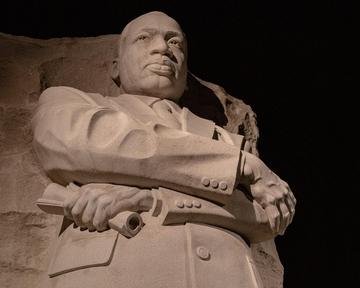Quiz Answer Key and Fun Facts
1. Frederick Douglass was born into slavery in Maryland in 1818 before becoming one of the nation's greatest abolitionist speakers, authors, and publishers. When he was an adolescent, he secretly taught himself to read and subsequently taught other slaves under cover of night. In what Baltimore shipbuilding neighborhood did he accomplish this?
2. Which president met Frederick Douglass with the words, "Here comes my friend Douglass" at a reception in the White House?
3. What was the name of the newspaper Frederick Douglass published?
4. Harriet Tubman was also an important abolitionist born into slavery in Maryland. After her own escape from slavery, she came back to Maryland to assist the Underground Railroad. Approximately how many slaves is it believed she helped to freedom?
5. What disease did Harriet Tubman reportedly suffer from?
6. Another Maryland-born slave who escaped to freedom was Josiah Henson. His autobiography, "The Life of Josiah Henson", became the basis for which book?
7. Thurgood Marshall, the grandson of a slave, became the first black Supreme Court Justice. Born in Baltimore in 1908, he attended Lincoln University in Pennsylvania with Cab Calloway and Langston Hughes. Upon completion he was denied entry into which Maryland institution because of his race?
8. Folk singer Bob Dylan is neither black nor from Maryland, however, one of his songs is about a black Maryland woman. This woman, who's name is in the song title, was struck by the cane of William Zantzinger at a Baltimore society function in 1963. Zantzinger, who was drinking, verbally assailed the 51 year old mother of ten and struck her for not fetching his drink quickly enough. When the woman died in a hospital the next day from a brain hemorrhage, he was arrested but only given a six month sentence. What is the name of the Dylan song that immortalized this woman?
9. Clarence Mitchell Jr., born in Baltimore, was affectionately called the "101st Senator". Mitchell, a black lawyer and lobbyist, was instrumental in the passing of the 1957 Civil Rights Act, the 1960 Civil Rights Act, the 1964 Civil Rights Act, the 1965 Voting Rights Act, and the 1968 Fair Housing Act. He also lobbied Congress to unite with the Judicial and Executive Branches in using the Constitution to protect African Americans from discrimination. What Baltimore building bears his name?
10. Born in a poor black neighborhood of Baltimore in 1948, Frizzell "Pee Wee" Gray went on to become a Congressman and head of the NAACP. Under what adopted name is he better known?
Source: Author
Scoob44
This quiz was reviewed by FunTrivia editor
bloomsby before going online.
Any errors found in FunTrivia content are routinely corrected through our feedback system.


